I have always loved racing and been enamored with motorsport. From the Subaru World Rally Team backpack I had in kindergarten to the way-too-many Hot Wheels cars I spent money on growing up, to the dozens of short-track and fairground races all around Kentucky and Indiana I drove myself to as soon as I got my license.
The one thing I never had, however, was actual racing experience. A family full of daily drivers, CVTs, SUVs, and good ‘ole vehicular responsibility meant the only real chances I got at experiencing motorsport first-hand came in the form of hours upon hours of Colin McRae: DiRT, Gran Turismo, rFactor and any other game I could whip cars around on.
Fast forward to now, and still driving a 200,000+ mile full-size SUV and not yet being done with college means options for real-life motorsport have really only expanded to abandoned snowy parking lots for me.
Working in the industry and talking with some of the American Rally Association’s best competitors at each round of the National Championship gave me a bit of an idea what rally driving is like, but let’s be real, you’ll never know unless you get behind the wheel and try it.

Thankfully, that same work with DirtFish afforded me a bit of a credit toward taking my very own three-day class, something I accepted without a second thought. I signed up for the last available four-wheel drive class with open spots for 2021, and looked forward to finally getting an idea of what competitive driving might be like.
Having gone into the class with basically zero experience, and honestly, about three combined hours of manual transmission practice in the DirtFish photographer’s Toyota 4Runner over the summer, I was excited but hesitant about what I actually might be able to do behind the wheel.
Luckily, day one of the class starts you off with the basics. Upon myself and my nine fellow students gathering in the classroom, we all met our first lead instructor – who in this case was Mitch – and went over our individual levels of experience.
Students ranged from having taken classes before, to having raced motorcycles, to having never driven a manual transmission at all.
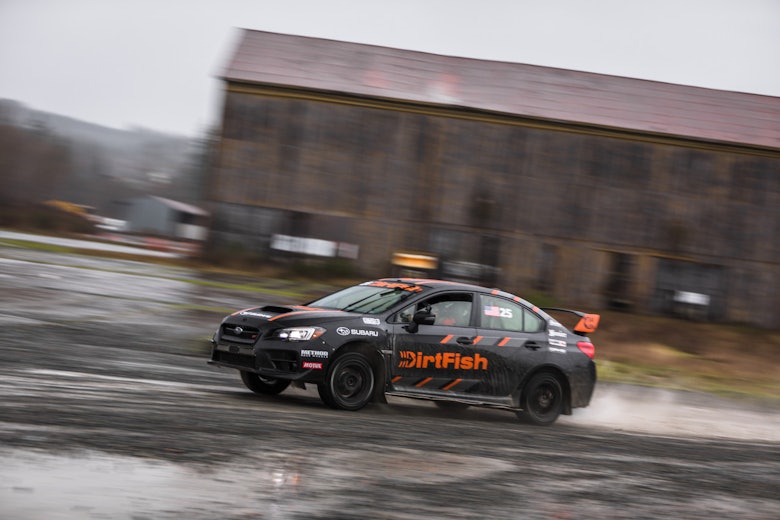
Having been assured I’d be fine with the stick-shift in the class vehicles because the 4Runner is “a pain in the ass”, we got on with things.
Our very first lesson would be over the well-known ‘lift, turn, wait’ and ‘lift, turn, brake’ techniques. Without trying to go into all of the detail and theory behind rallying in the dirt, almost everything we learned was all about controlling weight transfer in the car, and allowing that to do a lot of the work for us.
In this case, the idea is to let the weight of the car move to the front wheels going into a corner by lifting, turning the wheel to start rotation, and either waiting for the rear end of the car to come around and carry you through the corner, or applying brake as necessary to tighten up the line.
Of course, we didn’t sign up just to sit in a classroom and learn the theory, we were there to get behind the wheel and put it into practice!
With our helmets fitted, we all hopped onto a bus to take us down to our first course, the skid-pad.
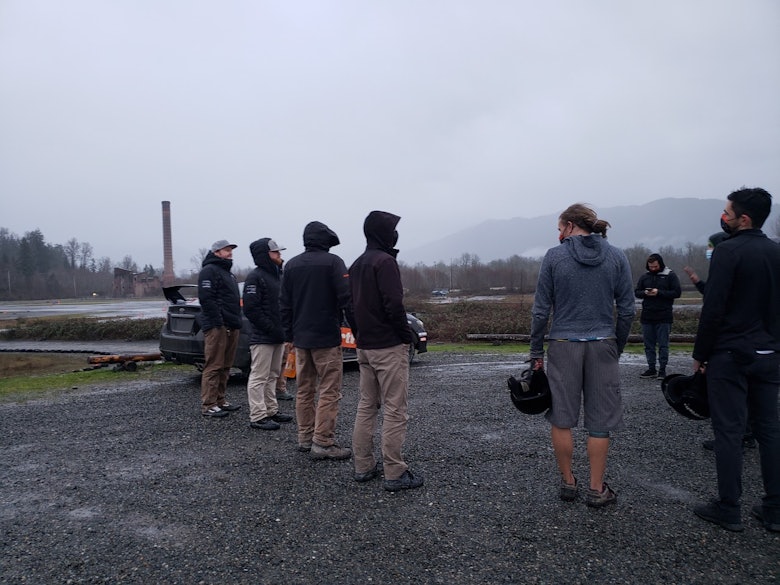
A simple flat gravel area set up for the students to go around in a circle getting a feel for how the car reacts to inputs, and trying to start nailing down the things we learned in the classroom.
Conditions would be extra slick, having rained overnight, and now snowing. We seemingly had the realistic inconvenient weather of many rally experiences.
Volunteering to be in the second driver group as the 10 of us shared five cars, I watched my classmates as they each quickly got a hang of the technique and slid the cars around quite well.
When my time came I hopped in car #227 with instructor Jason, and set off to the skid-pad. The first thing I noticed was that I was being too hesitant with trusting the car to do what it should. Braking early and not attacking the wheel quite hard enough wasn’t getting me to far.
I also found myself quickly picking up the techniques through the morning with Jason’s help, and before I knew it, it was already time to take the car back and move on.
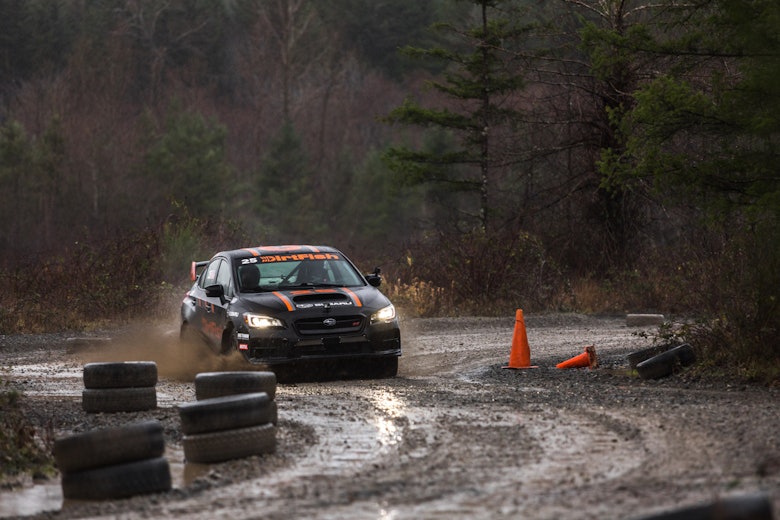
Now it was time for what I thought would be the hardest part, the slalom. I’m not sure why, but that line of cones seemed so menacing every time I watched it. It seemed like it would be so easy to just get behind on inputs and end up wildly off course. While I was right, I was pleasantly surprised to find that it wasn’t as difficult as I thought.
The main thing I needed to do was keep my vision up. If you haven’t taken a DirtFish class before, this is probably the most important, and commonly shared piece of advice. In normal driving our eyes tend to fall to just a little bit in front of where the car is, but in racing, they need to be further up, looking ahead not to where the car is about to be, but where you want to go.
This manifested itself well in the slalom as Jason’s advice to look not at the cone I was about to pass, not at the cone I was driving toward, but the cone beyond that. Something incredibly hard to keep up with, but incredibly helpful to the course.
This combined with a very quick “lift, turn, brake” at each cone made the slalom cleaner, and quicker than I would have ever guessed it could be.
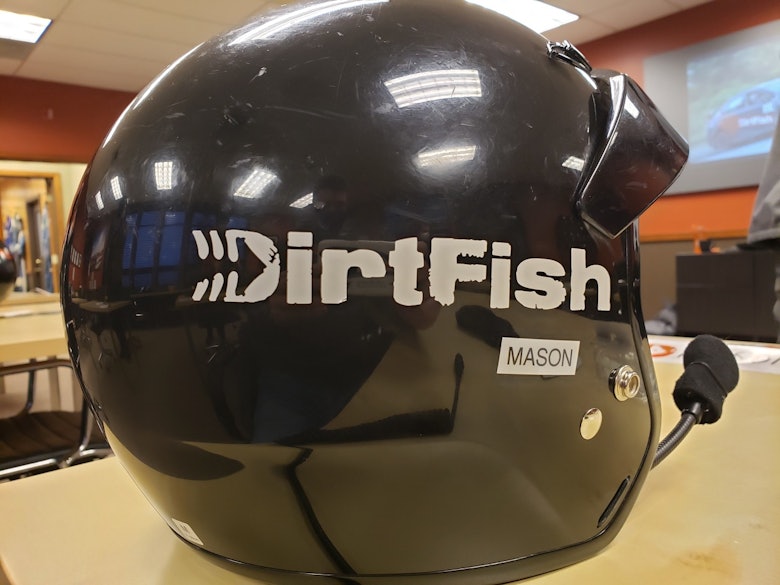
After a few sets of the slalom we went in for lunch, where after eating we could either race on simulators running various games from the DiRT series, or we could watch both historic and current rally videos in the classroom until it was time to go back out.
For the afternoon, classroom lessons continued with trail braking. The basic idea being slowly letting off the brake going into a turn to slowly allow the front wheels to gain traction from a lockup, allowing you to be more in control over the car.
I admit, this is a hard one for me to explain. What I quickly found was that the process of locking the wheels and letting off wasn’t so much as important as it was just finding the proper brake pressure to use in the corner in the first place, and then understanding trail braking as a tactic to use if you found yourself needing it, and thankfully my afternoon instructor Mitch agreed.
Day one concluded with the first real ‘course’ of the program, the Boneyard.
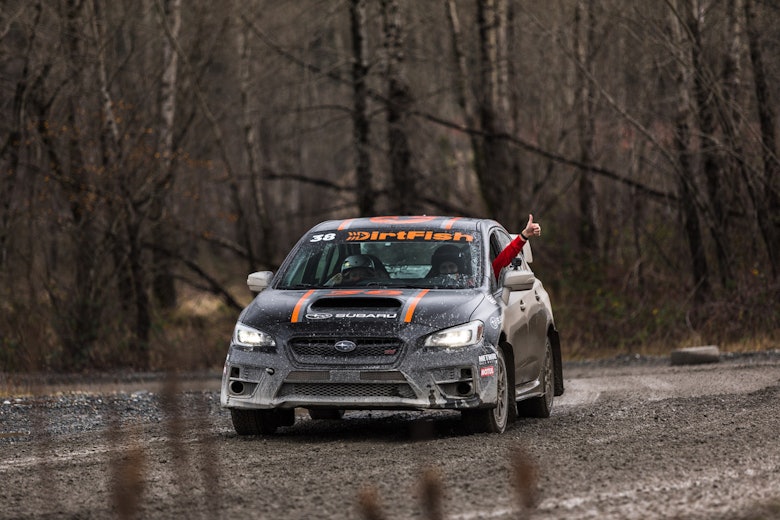
An assortment of different sized and different speed corners, and a straight long enough to reach the top of second gear made this a great place to test out the car control we spent the morning learning and give us our first taste of what running a rallycross, or even just a really small rally stage might be like.
Day two began learning more about weight transfer from side to side as opposed to the front-to-back we’d be practicing the day before.
We talked briefly over the technique behind the famous Scandinavian flick, or ‘pendulum’ as the class tends to refer to it as, as well as linked corners and the theory behind how to properly weight-shift the car.
Of course, the fun came when we once again hit the course, jumping straight into the pendulum. This morning behind the wheel of car #38, with rain still coming down, and instructor Brad in the passenger seat, I set off to see what I could do to flick the car into the same 90° left as the trail-braking exercise the day prior.
Looking through the corner and being patient with the car to come around was a bit difficult to me on the first set.
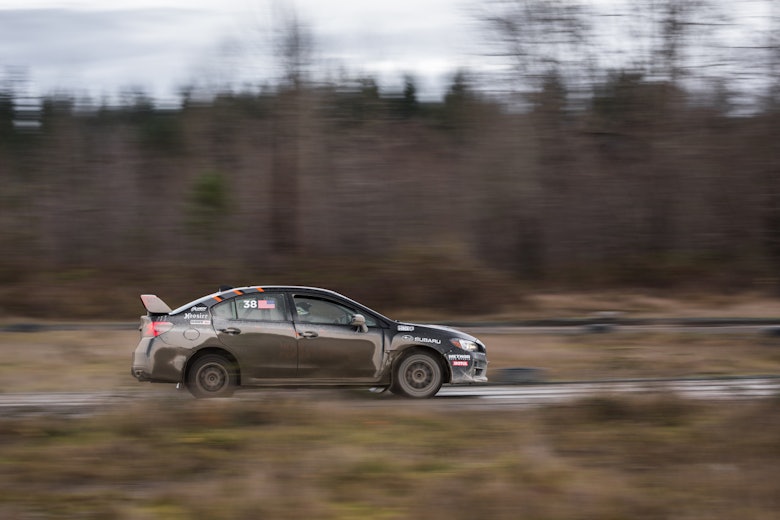
After years of my only experience being racing simulators, I kept instinctively getting on the throttle too early to show-boat out of the corner, although in the real world, it just made me push way too wide and take out a bollard a time or two.
I think this is the point in the course where things really start to get difficult if you’re just there for a good time. DirtFish’s courses are an absolute blast, don’t get me wrong, but if you aren’t applying yourself to learn car control and listen to the instructors on how to improve each step of the way, I can see it being easy to start struggling here. I know I did.
But I did start to get a hang of it by the end of the first set, in tricky weather, and was able to spend the second practice set perfecting the technique, and entering with more speed.
As a bit of an aside, Brad was one of the best instructors when it came to keeping the mood light during downtime, diverting conversation to “what super-power would you have?” and follow-up questions that I never would have considered to my answer of “being bitten by a radioactive spider”. I think this helped as I was starting to get into my own head during this exercise at times which could have hindered my ability to progress.
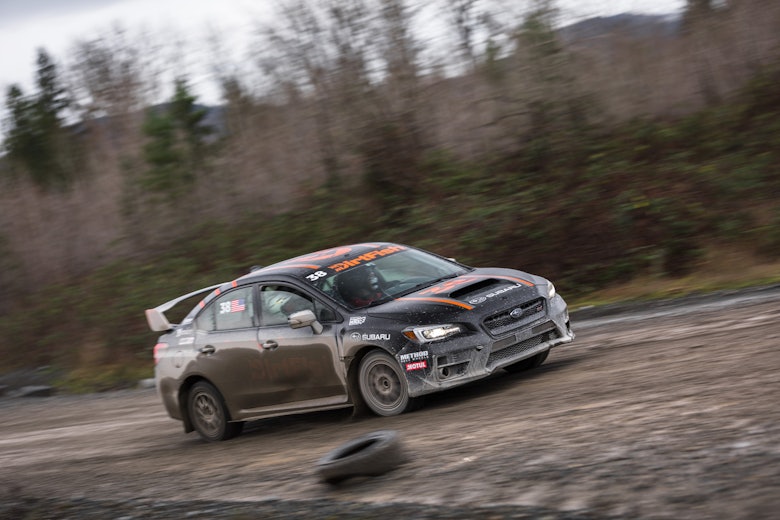
After the morning exercise, we moved on to The Link. A simple combination of the Boneyard and the Slalom from the day before, The Link allowed us to review what we learned the previous day, while getting more seat time to improve technique, and hopefully experience situations where a pendulum would present itself.
While there nothing new apart from the absolutely wonderful “link turn”, it felt so much better to get longer runs in, and combine the very separate styles of the Slalom and the Boneyard.
This is where I started to really see my problems with keeping my vision up come through. Most of my time on The Link, Brad was helping me figure out when it was appropriate to move on to looking at different markers, as well as a little bit of advice on improving my technique in the turns. My worst moment came when I cut extremely close to a cone and instinctively looked behind me to see if I knocked it over. I was later told the rearview mirrors were taken out of the cars to prevent this very thing.
One of the best parts of the Link is that it’s basically entirely visible from the Gazebo hill that we wait in while the other driver group is going. The lead instructor can walk us through what’s happening on course, and what mistakes to avoid, while we also get to see how our fellow classmates are doing on course.
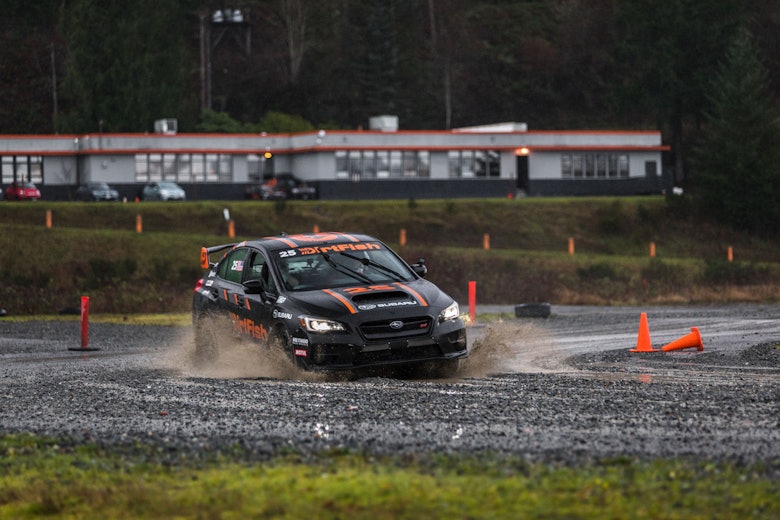
Day two’s afternoon is some of the most fun yet. We started off with another exercise of linked corners which went similarly to the pendulum as far as my experience with improvements, although I felt less consistent at this particular exercise.
I was lucky to have Kip in the car with me for the afternoon as my instructor. I’ve been fortunate enough to ride with Kip in his BMW 3-series rallycross car in the past, and see just how smooth he is sliding it through linked turns, and while this was four-wheel drive instead of rear-wheel drive, I felt he was probably one of the best instructors for talking me through this part of the course.
Our afternoon course after the exercise was The Grid, one of the fastest, trickiest on the property. It has multiple linked corners, technical sections as well as high-speed sections, and switches back and forth from Tarmac to gravel multiple times, which made for tricky situations on traction, especially when the track was soaked.
This was where my vision really got put to the test, and while Kip was helping me through the linked corners as much as I had hoped, I’d say just about every other sentence out of his mouth was “keep your eyes up” for the majority of the runs.
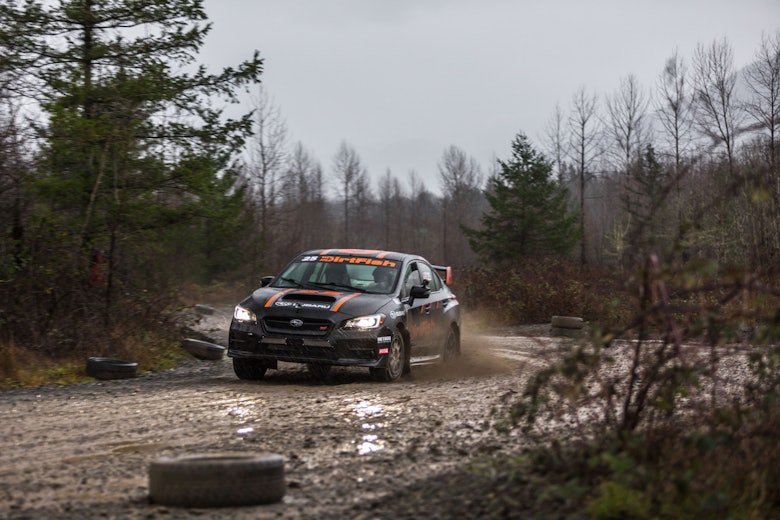
To his defense, that’s exactly what I needed, I had a really bad habit of dropping my vision just about every time I exited a corner, and then looking up, but not far enough. I know this is an odd point to be hammering, but I promise it just makes sense when you’re in the car experiencing it.
By the end of the day Kip and I felt really good on The Grid, even navigating a tricky down-shift that I was unsure about going in, and by the last run he barely had to remind me to pay attention to my eyesight.
Finally for day three, it’s no more exercises, and all courses. After a brief lesson in the classroom, we went outside to the still soaking wet course for our warm-up on the modified version of The Link. The goal of this course is simply for the students to prove they can drive clean before we get thrown into the more dangerous courses where instead of a cone we could be hitting a tree.
I was excited to have Michelle in the passenger seat for the morning. With over 18 years of motorsport experience, and plenty of co-driving (including this year for Lia Block), Michelle is one of the most well-versed rally veterans I know.
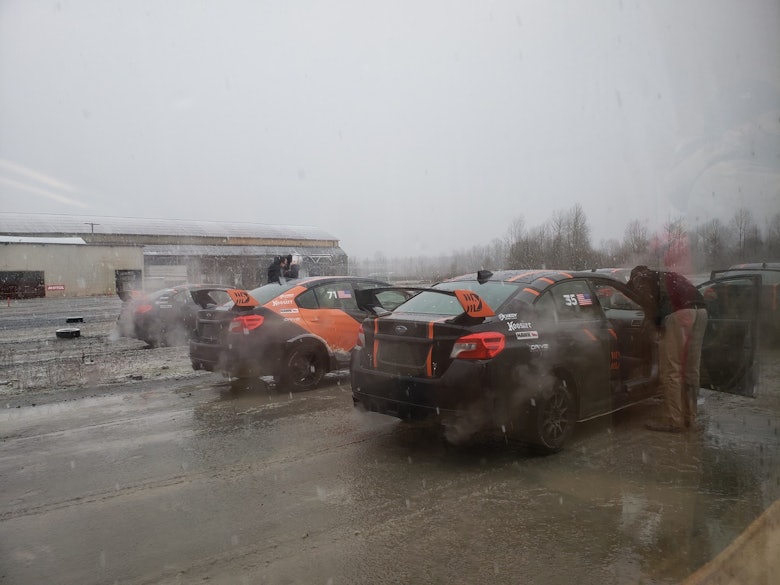
Our experience on Modified Link went fantastic. Michelle was great at taking the skills I had developed over the first two days, and pushing me to improve and go faster. The course was overall very smooth and a great refresher for the rest of the day, and thankfully we were all able to prove our abilities to not wrap the car around a tree before moving on.
And so the main course for the morning was The Wedge, and this time we didn’t get an instructor demo but instead just a quick drive-through with the bus to see what we’d be up against.
By this point in the class my instructors agreed that I seemed to have the main techniques down, and just had to get more seat time, and focus on honing those skills. Michelle continued to be great for this throughout The Wedge, where my newest problem – missing gears – really started to show.
While I had become pretty consistent at launching, and getting into second gear, most of the courses are set up to where that’s all you need. On day three however, there’s way more opportunity for third gear speeds, and I’m pretty confident I averaged one bad shift per run, though thankfully never the dreaded second to first.
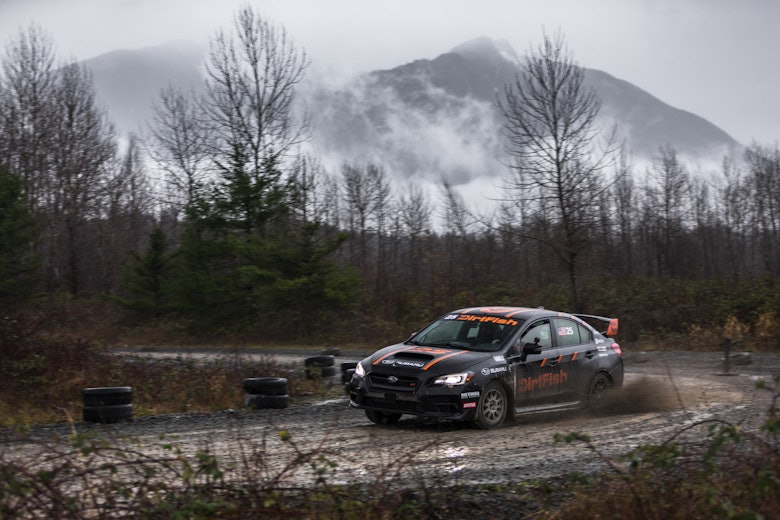
Overall though, it felt clear to me that I was improving with each run in some way, be it linking a corner properly, nailing a shift, or simply just having fun sliding the car. Michelle even tried a few times to time me, but each time we got interrupted by having to stop for a spun or stalled car.
While The Wedge was fantastic, the real treat of a three-day class at DirtFish is the Mill Run. It takes up the entire afternoon of the third day, and students go in completely blind, relying on instructors’ notes and instructions.
For this course, I had Jack as my instructor. Jack and I have bonded in the past over our love of metal music and similar sense of humor, so I was very excited to have him sit with me for the Mill Run.
I was also excited to have Jason’s dog Tank with us for the afternoon. Tank was helpful at easing any nerves anyone may have had, and besides, who doesn’t enjoy the company of a well-behaved dog?
The Mill Run borrows parts of many different courses, including the Grid, Slalom, Link and Wedge and combines them all for a long, looping stage designed to utilize all of the skills from the class.
I’d be lying if I said that I went out on the Mill Run with all of the lessons in mind and nailed it. The reality is rally driving is messy, especially in gravel. The turns are never exactly the same because another car has gone through and worn it down, meaning you have to adapt to whatever the surface is doing as you drive.
As you learn and improve in one part of the track, all of a sudden you have to relearn the next part because you have more speed going into it than before.
You make a mistake and lose time, but you can’t “make it up”, you just have to continue as best you can.
This was far more representative of my Mill Run experience. Don’t get me wrong, I did see improvement over my three sets, but being thrown into a new car (#25) right as I started, and combining so many different aspects from over the length of the class, it no longer felt like I was doing time-trials on a course, but that I was actually going on stage, unsure of exactly what was waiting for me, and simply hoping to adapt as the road came to me through Jack’s instruction and my own eyes.
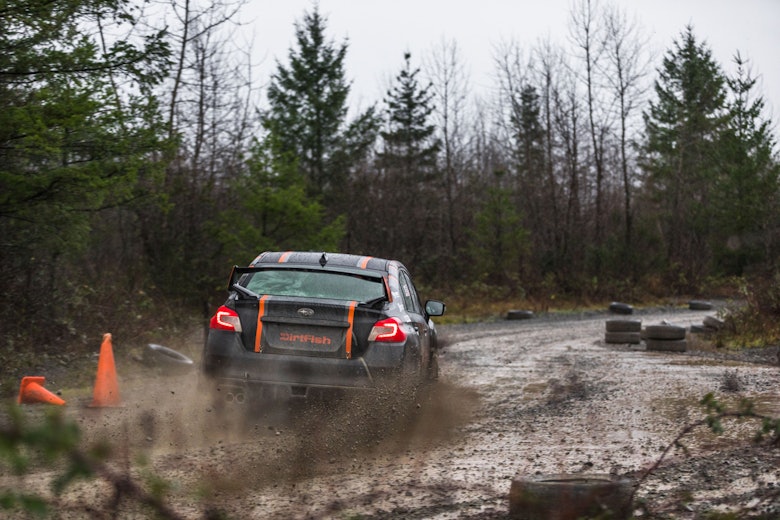
All of these factors combined made the Mill Run probably the most helpful learning experience of the whole class as far as preparing me for what a stage rally might be like if I ever entered one in the future, and also made it extremely rewarding when on the last run as I finally nailed down the section that I struggled with most. It had to have been one of the greatest feelings I’d ever had.
Overall, I was impressed with how much the DirtFish Three Day All-Wheel-Drive was able to pack into such a short time, and even more impressed with how I was able to pick up so much of it from having no experience apart from video games and daily driving.
If you’re thinking of taking a DirtFish course, I’d highly encourage it. I know that’s probably a given coming from an employee of the company, but I really do mean it.
Check your ego at the door, listen to the instructors, and you’ll not only have a great time but learn some incredible car control, get a bit of a feel for what your childhood heroes do, and have memories that will last a lifetime.
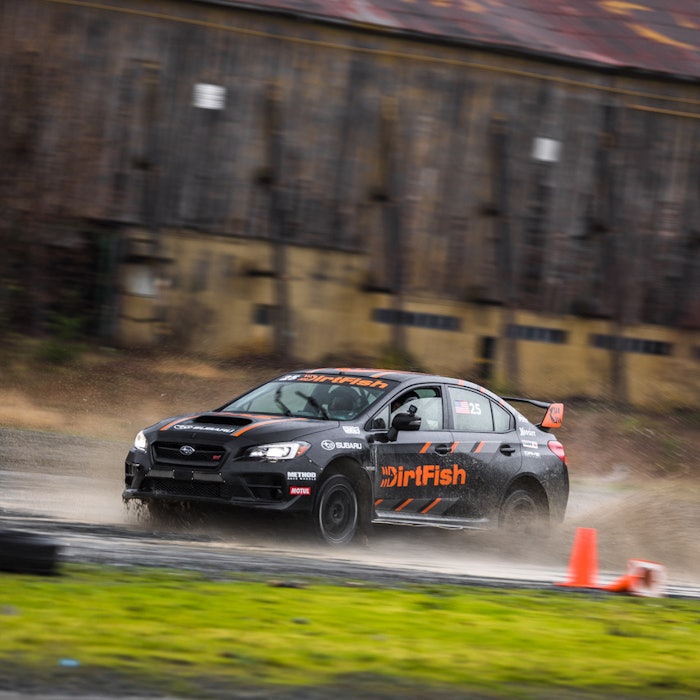
Get behind the wheel
Ready to get behind the wheel and live Mason's experience for yourself? Sign up to one of our courses today!




